Review of 98 single board computers. Part 3
Part 1
Part 2
Part 3
Part 4
NanoPC-T3
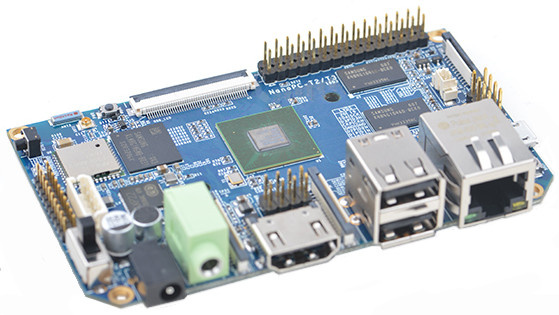
Company / Project - FriendlyElec (FriendlyARM)
LinuxGizmos Review
Product page
CPU - Samsung S5P6818 (8x Cortex-A53 @ 400MHz to 1.4GHz); Mali-400 MP GPU
Memory - 1GB or 2GB DDR3 RAM; 8GB eMMC
Price - $ 60
FriendlyElec (also known as FriendlyARM) now offers at least a dozen single-board payments, which exceeds our threshold of 10 devices per company, and this led us to exclude some of them from our first list. We combined several similar products into one item, the NanoPi model. The size of the NanoPC-T3 is 100 x 60mm. This is one of the most advanced boards from FriendlyElec. It is equipped with an eight Samsung S5P6818. The NanoPC-T3 SBC is almost identical to the earlier, four-core NanoPC-T2. In addition to a faster processor, the T3 board adds the 2GB RAM option. Also, both NanoPC cards have an SD, GbE, WiFi, and Bluetooth 4.0 slot. The boards are equipped with four USB host, micro-USB client, and media ports, including HDMI, LVDS, LCD, MIPI-DSI, MIPI-CSI, and audio. Instead of the usual 40-pin RPi connector, the NanoPC-T3 has a 30-pin GPIO connector.
NanoPi A64

Company / Project - FriendlyElec (FriendlyARM)
LinuxGizmos Review
Product page
CPU - Allwinner A64 (4x Cortex-A53 @ 1.2GHz); Mali-400 MP2 GPU
Memory - 1GB DDR3 RAM
Price - $ 25
Motherboard NanoPi A64, released in December 2016, was the first motherboard from FriendlyElec, equipped with a four-core 64-bit processor. Now it has been joined by NanoPi K2 and NanoPi Neo 2, and there is also the first eight-core NanoPi-T3. The NanoPi A64 has a compact, 64 x 60mm size comparable to the NanoPi M3. The board has two USB host ports, micro-USB (only for power), as well as HDMI, MIPI-DSI, microSD, audio, and DVP connectors for the camera. Power 5V, GbE, WiFi, but no Bluetooth, and you get a 40-pin Raspberry Pi expansion connector. Images are available for Ubuntu Core and Ubuntu Mate. Most NanoPi boards are available with a large list of options, starting with cases and radiators and ending with camera modules.
NanoPi K2

Company / Project - FriendlyElec (FriendlyARM)
LinuxGizmos Review
Product page
CPU - Amlogic S905 (4x Cortex-A53 @ 1.5GHz); Mali-450 MP2 GPU
Memory - 2GB DDR3 RAM
Price - $ 40
The specifications of the video-oriented NanoPi K2 motherboard look familiar, as they practically repeat those for the Odroid-C2 board for $ 46, except for the processor, which is almost the same as the Raspberry Pi 3 for $ 35. The NanoPi K2 has the same quad-core A53 Amlogic SoC and a size of 85 x 56mm, like the Odroid-C2, as well as the similar 2GB RAM, 4x USB, GbE, and 40-pin RPi connectors. Unlike the Odroid-C2, but similar to the RPi 3, the NanoPi K2 has WiFi and Bluetooth 4.0, which means you don’t need to occupy the USB port. The Amlogic S905 chip with the Mali 450 GPU is significantly more powerful than the Broadcom / VideoCore IV SoC of the RPi3, and supports 4K @ 60fps decoding and DVFS. Available Android 5.1, Ubuntu is under development.
NanoPi M1
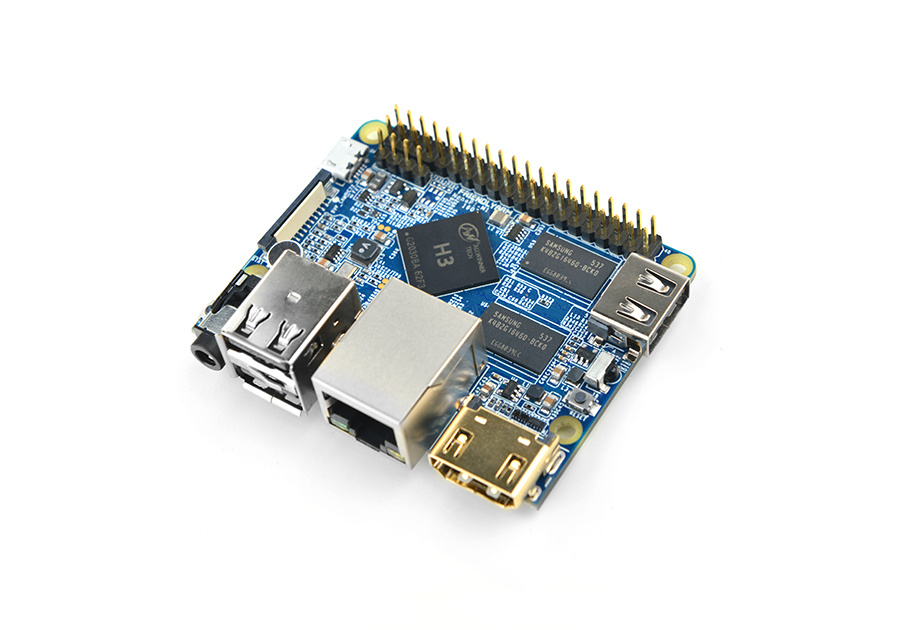
Company / Project - FriendlyElec (FriendlyARM)
LinuxGizmos Review
Product page
CPU - Allwinner H3 (4x Cortex-A7 @ 1.2GHz); ARM Mali-400 MP2 GPU
Memory - 512MB or 1GB DDR3 RAM
Price - $ 15 or $ 20 (1GB)
The 69 × 48mm NanoPi M1 board contains a quad-core Allwinner H3, like the Orange Pi One for $ 10. The M1 offers more options, including CVBS A / V output, an IR receiver, a microphone, and two additional USB 2.0 ports (i.e., three). Standardly included microSD, Fast Ethernet, HDMI, DVP camera, and 40-pin RPi connector. Ubuntu MATE and Ubuntu Core images are available. During this year, LinkSprite launched a re-branded version of the NanoPi M1, called pcDuino4 Nano, for $ 25 with 1GB of memory.
NanoPi M1 Plus
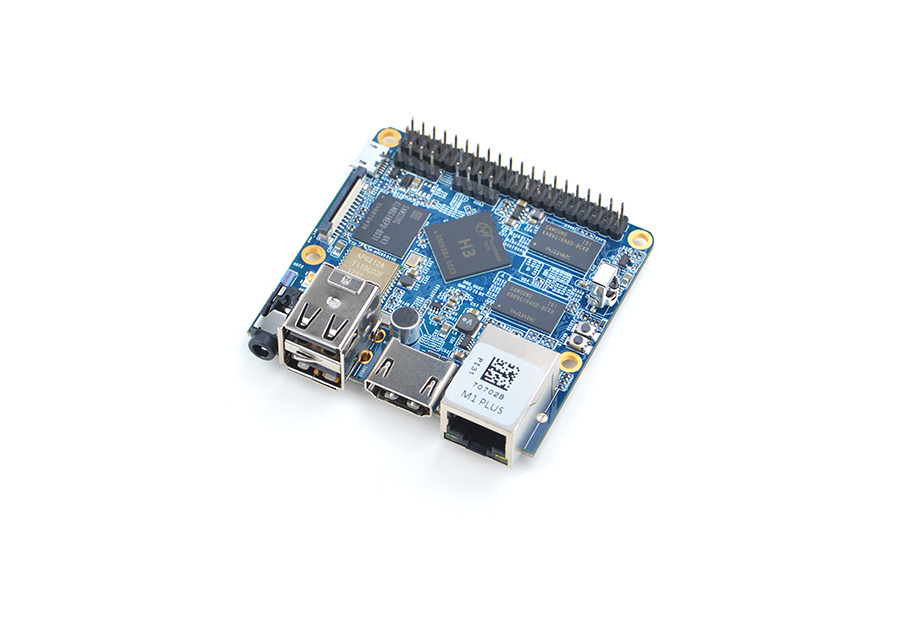
Company / Project - FriendlyElec (FriendlyARM)
LinuxGizmos Review
Product page
CPU - Allwinner H3 (4x Cortex-A7 @ 1.2GHz); ARM Mali-400 MP2 GPU
Memory - 1GB DDR3 RAM; 8GB eMMC
Price - $ 35
The latest, the most sophisticated version of the NanoPi M1 for $ 15 contains Allwinner H3, and has a size of 64 × 60mm. The higher price comes from 1GB RAM and 8GB eMMC, as well as new options: WiFi, Bluetooth, microphone, and Gigabit Ethernet. One of the three USB 2.0 host ports, however, has been moved to the connector on the board. Operating system choices include Ubuntu Mate, Ubuntu Core, Debian, and Android.
NanoPi M2A / M3
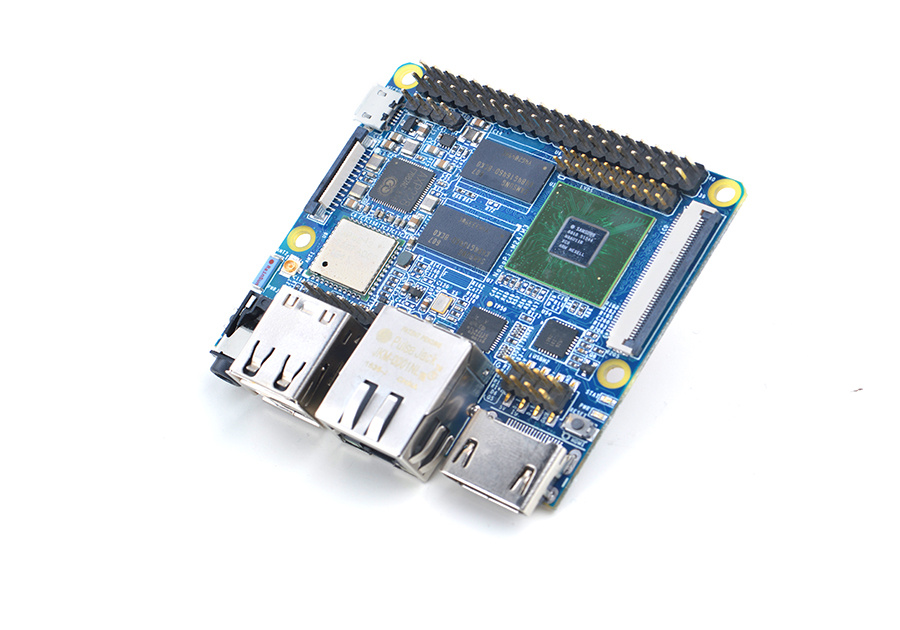
Company / Project - FriendlyElec (FriendlyARM)
LinuxGizmos Review
Product page
CPU - Samsung S5P4418 (4x Cortex-A9 @ 400MHz to 1.4GHz with 3D GPU) for M2A or Samsung S5P6818 (8x Cortex-A53 @ 400MHz to 1.46GHz with Mali-400MP GPU) for M3
Memory - 1GB DDR3 RAM
Price - $ 30 (M2A) or $ 35 (M3)
The latest released NanoPi M2A replaces the similar $ 25 NanoPi M2 based on the Samsung S5P4418, which we removed from the list because it is no longer on sale. In addition to SoC, the NanoPi M2A board is almost exactly the same as the NanoPi M3 for $ 35 on the eight-core Samsung S5P6818, so we combined them into one item. The size is 64 x 60mm, and the possibilities are identical, except for the fact that a microphone was added to M2A and the power supply was not 5V @ 2A, but 5V @ 3A. Both monolabs have WiFi, BT 4.0, GbE port, media interfaces such as HDMI, LCD, LVDS, DVP, and audio. Both have two USB 2.0 host ports and two more USB connectors, a micro-USB port, and a 40-pin RPi connector. The operating system images for the NanoPi M2A include Android 4.4 and 5.1, Debian 8.1, and Ubuntu Core with Qt.
NanoPi 2 Fire
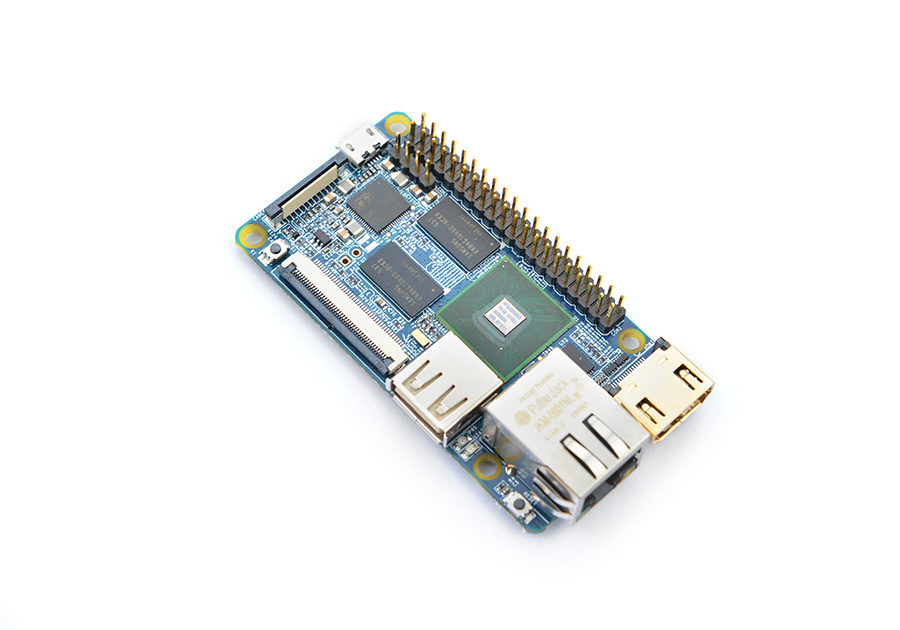
Company / Project - FriendlyElec (FriendlyARM)
Product page
CPU - Samsung S5P4418 (4x Cortex-A9 @ 400MHz to 1.4GHz); 3D GPU
Memory - 1GB DDR3 RAM
Price - $ 29
The NanoPi 2 Fire board replaced the earlier NanoPi 2 SBC, and also runs Android or Debian on the quad-core SoC A9 S5P4418. The Fire card changed the old wireless module to the GbE port, and added PMIC. The size is 75 x 40mm, there is both an HDMI port and an LCD interface, and a DVP camera interface is supported. Other features include a microSD slot, a 40-pin RPi connector, a micro-USB OTG port, and a USB host port.
NanoPi Neo / Neo2
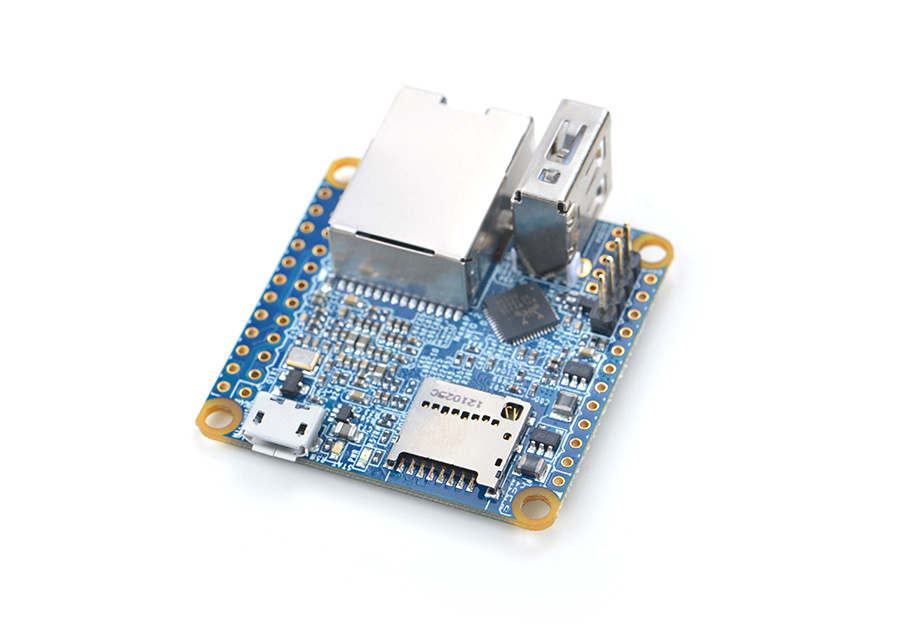
Company / Project - FriendlyElec (FriendlyARM)
LinuxGizmos Review
Product page
CPU - Allwinner H3 (4x Cortex-A7 @ 1.2GHz with Mali-400 MP2 GPU) for Neo or Allwinner H5 (4x Cortex-A53 @ 1.2GHz with Mali-450 GPU) for Neo2
Memory - 256MB or 512MB DDR3 RAM (Neo) or 512MB DDR3 (Neo2)
The price is $ 8 or $ 10 (512MB) for Neo or $ 15 for Neo2
Earlier this year, the NanoPi Neo with dimensions of 40 x 40mm on the quad-core -A7, was joined by the NanoPi Neo2 board on the 64-bit quad-core -A53, the rest is almost the same. The Neo2 card is the same as the Neo, except for the faster SoC, GbE instead of 10/100 Ethernet, two additional USB connectors, and it does not have the option of 256MB RAM. All of these cards have the Neo Air wireless option (see below). These cards are the smallest and cheapest quad-core on the ARM in the world. At a size of 40 x 40mm, they occupy only 1,600 square meters. mm, compared with 1.950 square meters. mm for Raspberry Pi Zero (65 x 30mm). The NanoPi Neo and Neo2 boards are also equipped with a microSD, USB 2.0 host port, and OTG micro USB ports. All three Neo cards work under Ubuntu Core or Mate, and do not have display and camera interfaces. You get 36 GPIO pins instead of the usual RPi connector.
NanoPi Neo Air
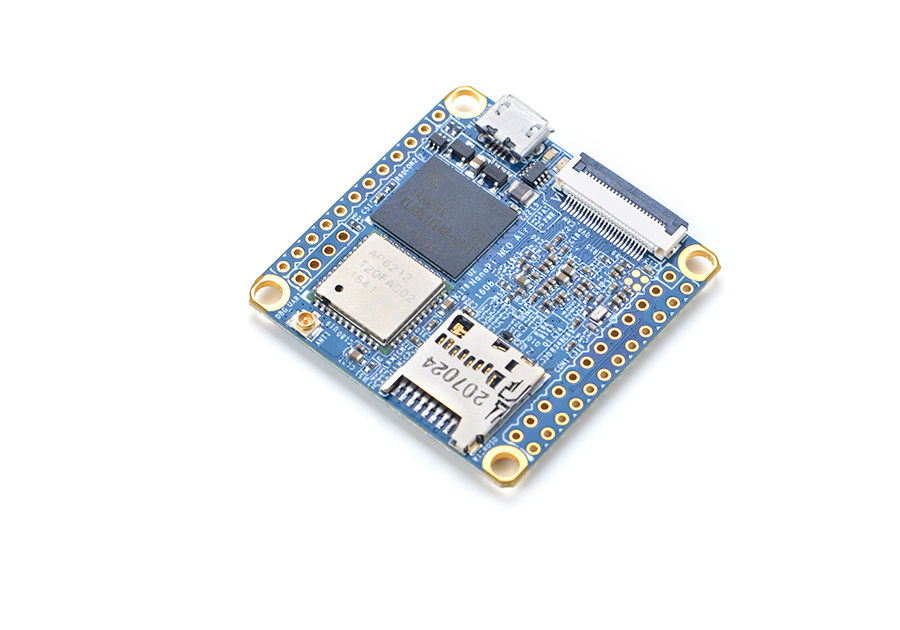
Company / Project - FriendlyElec (FriendlyARM)
LinuxGizmos Review
Product page
CPU - Allwinner H3 (4x Cortex-A7 @ 1.2GHz); ARM Mali-400 MP2 GPU
Memory - 512MB DDR3 RAM; 8GB eMMC
Price - $ 20
Fee NanoPi Neo Air, this is an improved NanoPi Neo. This IoT card has the same miniature size of 40 x 40mm, and also works under Ubuntu Core and Mate on the Allwinner H3. The Neo Air has 512MB RAM, plus 8GB eMMC, WiFi, Bluetooth 4.0, and a DVP camera interface. The Air has no Ethernet port and no USB host port, leaving you only a micro-USB OTG for power and data. You can get more USB ports through 36 GPIO pins.
NanoPi S2
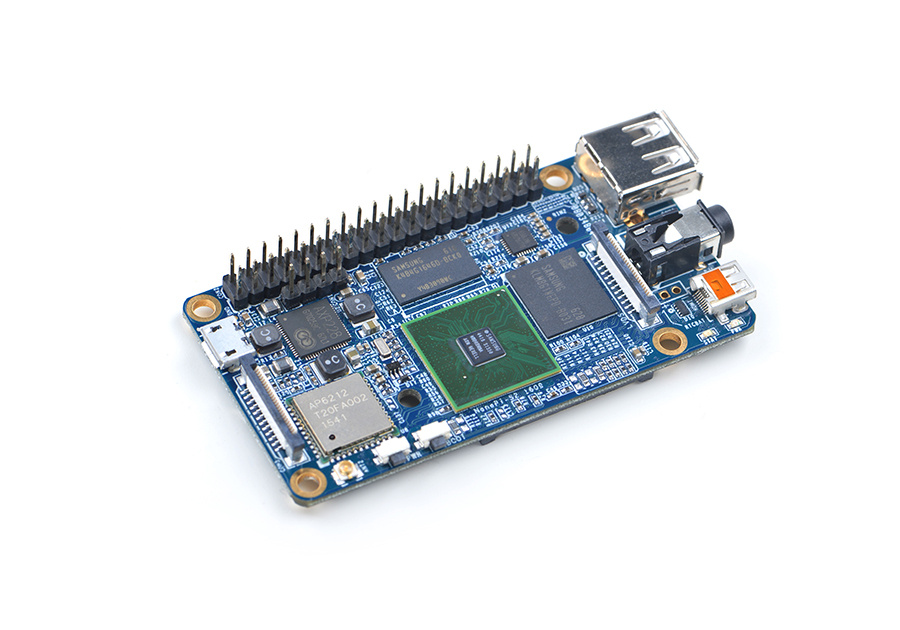
Company / Project - FriendlyElec (FriendlyARM)
LinuxGizmos Review
Product page
CPU - Samsung S5P4418 (4x Cortex-A9 @ 400MHz to 1.4GHz); 3D GPU
Memory - 1GB DDR3 RAM; 8GB eMMC
Price - $ 45
The NanoPi S2 is an improved, equipped with NanoPi 2 Fire wireless interfaces, with the same size of 75 x 40mm and quad-core -A9 S5P4418 with support for Debian and Android. Other common features include a USB 2.0 port and micro-USB ports, a microSD slot, PMIC, a 40-pin RPi connector, and interfaces for the LCD and camera. The NanoPi S2 does not have a GbE port, like Fire, but has WiFi and Bluetooth 4.0. HDMI port replaced with mini-HDMI. Unlike 2 Fire, the S2 card is equipped with 8GB eMMC, ADC connector, audio jack, and LVDS interface.
Odroid-c0
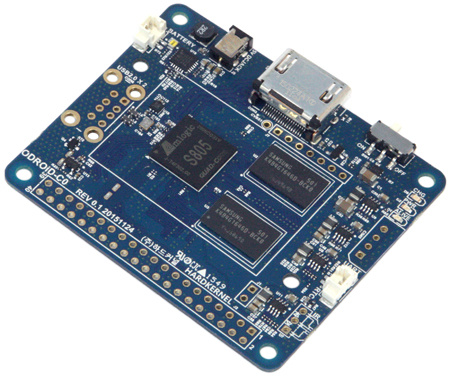
Company / Project - Hardkernel, Odroid project
LinuxGizmos Review
Product page
CPU - Amlogic S805 (4x Cortex-A5 @ 1.5GHz); Mali-450 GPU
Memory - 1GB DDR3 RAM; optional eMMC 4.5
Price - $ 30.80 (c $ 1.80 Connector Pack)
Designed for IoT and robots, the Odroid-C0 is smaller (65 x 56mm), and is a simplified version of the Odroid C and C + (see below). It has the same four core -A5 Amlogic SoC, works under Ubuntu and Android 4.4 and supports GCC 4.9.2 Linux toolchain. Its only port is HDMI. However, the optional Connector Pack will allow you to access other interfaces, including two USB host ports, a serial port, IR, I2S, and a RPi 40-pin interface. Battery charger connector supports optional 3.7V Li-Po battery. Internet connection requires external wifi. As with all Odroid boards, shipping is included in the price.
Odroid-C1 +
Company / Project - Hardkernel, Odroid project
LinuxGizmos Review
Product page
CPU - Amlogic S805 (4x Cortex-A5 @ 1.5GHz); Mali-450 GPU
Memory - 1GB DDR3 RAM; optional 8GB eMMC
Price - $ 35
The Odroid-C1 + is an upgrade to an earlier version of the Odroid-C1 and is equipped with an HDMI port, a standard heatsink, and I2S (audio) and micro-USB-OTG interfaces. The C1 + board has a price, dimensions and capabilities that are almost identical to the original 32-bit Raspberry Pi 2, but it is more open-source, has a faster processor, and supports Android 4.4 in addition to Ubuntu 14.04. The C1 + card is also equipped with a microSD slot and an optional eMMC, as well as GbE, a serial interface, an ADC, and a RPi-compatible 40-pin connector.
Odroid-c2

Company / Project - Hardkernel, Odroid project
LinuxGizmos Review
Product page
CPU - Amlogic S905 (4x Cortex-53 @ up to 1.5GHz); Mali-450 MP2 GPU
Memory - 2GB DDR3 RAM; optional 8GB eMMC
Price - $ 46
The board has the same size of 85 x 56mm as the Odroid-C1 + and Raspberry Pi 3, and is improved with the -A53 Amlogic S905 SoC. It is faster and more open source than RPi 3, but it does not have WiFi and Bluetooth, and it is $ 11 more expensive. The C2 has twice as much memory as C1 +, 2GB, and offers a choice between 64GB eMMC and 8GB or 16GB SD 3.01 compatible with UHS-1 microSD card. The Odroid-C2 has a 4k / 60Hz video output, and almost everything that C1 + has, including GbE and an HDMI port, four USB ports, and a 40-pin RPi connector. Available images are Android 5.1 or Ubuntu 16.04, based on the Linux 3.14 LTS kernel.
Odroid-xu4
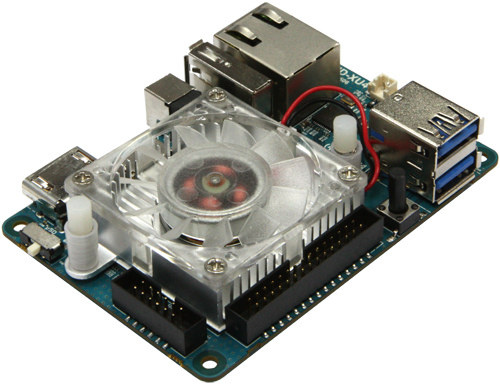
Company / Project - Hardkernel, Odroid project
LinuxGizmos Review
Product page
CPU - Samsung Exynos5422 (4x Cortex-A15 @ 2.0GHz and 4x Cortex-A7 @ 1.4GHz); Mali-T628 MP6 GPU
Memory - 2GB LPDDR3 RAM; optional 64GB eMMC
Price - $ 59
As other Odroid boards fall in price, so the Odroid-XU4 recently dropped by $ 15. The size of the board is 83 x 58mm. The board replaced the Odroid-XU3 and has the same eight-core Exynos5422 and Mali-T628 GPU processor. It has a GbE port, an HDMI port with sound support, two USB 3.0 ports, and a USB 2.0 port. The XU4 has a 12-pin GPIO connector in addition to the 30-pin expansion connector. There is also an optional USB-connected SATA 3 module, an I / O board, and various wireless modules. The Odroid-XU4 supports Android up to 7.1 Nougat, as well as Ubuntu 16.04, based on the Linux 4.9 LTS kernel.
Orange Pi 2G-IOT

Company / Project - Shenzhen Xunlong Software
LinuxGizmos Review
Product page
CPU - RDA RDA8810PL (1x Cortex-A5); Vivante GC860 GPU
Memory - 256MB LPDDR2 RAM; 500MB NAND
Price - $ 9.90
The Shenzhen Xunlong company has been selling a bunch of indecently cheap Orange Pi models - and has added another half a dozen since our June (2016) review. The Orange Pi project is often criticized for poor Linux support and problems with the quality of hardware, but the situation is improving. The Armbian community is helping to improve Linux support, and in March Shenzhen Xunlong entered into a partnership with Canonical to launch Ubuntu’s app for Orange Pi single-board devices. Linux and Android OS images are available for a wide variety of Orange Pi boards. The first Orange Pi on our list is somewhat atypical. The tiny, 68 x 42mm Orange Pi 2G-IOT motherboard has a temperature range of -10 to 65 ° C, and runs on Android 4.4, Ubuntu, Debian, and RPi images on a single-core Cortex-A5 RDA RDA8810PL SoC (1GHz) with integrated 2G GSM / GPRS / EDGE. The fee for $ 10 has WiFi, BT, and a SIM card slot with a 2G antenna. Other features include LCD, MIPI-CSI, and audio interfaces, as well as USB 2.0 host and micro-USB OTG ports, and a RPi 40-pin connector.
Orange pi lite
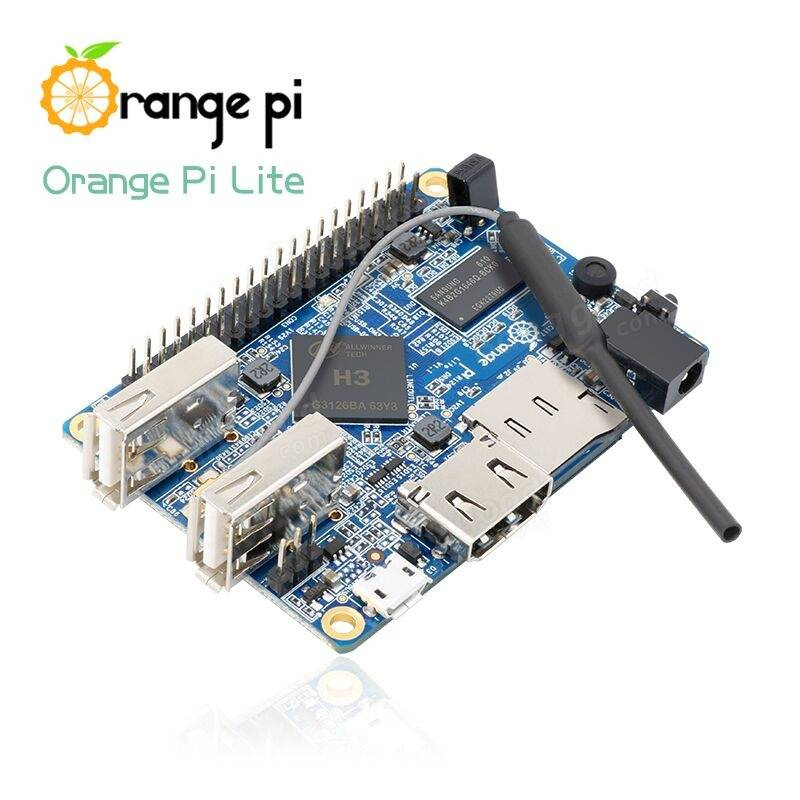
Company / Project - Shenzhen Xunlong Software
LinuxGizmos Review
Product page
CPU - Allwinner H3 (4x Cortex-A7 @ 1.2GHz); Mali-400 MP2 GPU
Memory - 512MB DDR3 RAM
Price - $ 12
Sold at an attractive price, the Orange Pi Lite, equipped with the WiFi version of the Orange Pi One, has a 1.2GHz version of the four-core SoC H3 comparable to 1.6GHz in the Orange Pi PC. It is also limited to just half a gigabyte of RAM, and is devoid of Ethernet ports, but you get a second USB host port. Other features include microSD, WiFi, HDMI, MIPI-CSI, micro-USB OTG, and the usual Orange Pi 40-pin RPi connector.
Orange pi one

Company / Project - Shenzhen Xunlong Software
LinuxGizmos Review
Product page
CPU - Allwinner H3 (4x Cortex-A7 @ 1.2GHz); ARM Mali-400 MP2 GPU
Memory - 512MB DDR3 RAM
Price - $ 10
The very affordable Orange Pi One comes behind the $ 12 Lite version. It has 10/100 Ethernet instead of WiFi, and one USB host instead of two. The rest of the specifications are identical, including microSD, HDMI, MIPI-CSI, micro-USB OTG, and 40-pin connector. Comparing price, performance, and features, the Orange Pi One obviously defeats RPi Zero at a cost of $ 5 to $ 25. However, the H3-based NanoPi M1 board has more features, but costs from $ 15 to $ 20.
Orange Pi PC / PC Plus
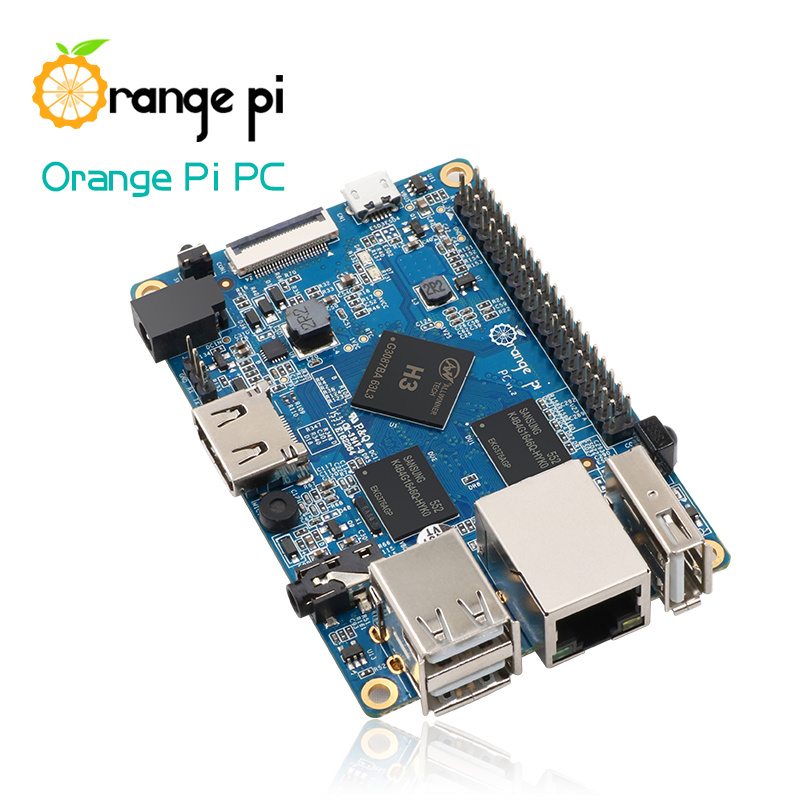
Company / Project - Shenzhen Xunlong Software
LinuxGizmos Review
Product page
CPU - Allwinner H3 (4x Cortex-A7 @ 1.6GHz); Mali-400 MP2 GPU
Memory - 1GB DDR3 RAM; 8GB eMMC on PC Plus
Price - $ 15 ($ 22 for PC Plus)
The $ 15 Orange Pi PC based on the Allwinner H3, similar to the Raspberry Pi, has a size of 85 x 55mm, and an RPi-compatible 40-pin expansion connector. It has twice as much RAM as Lite and One, and has microSD, HDMI, CVBS, CSI, USB OTG, and a 10/100 Ethernet port. The newer Orange Pi PC Plus also has an 8GB eMMC.
Orange Pi PC 2
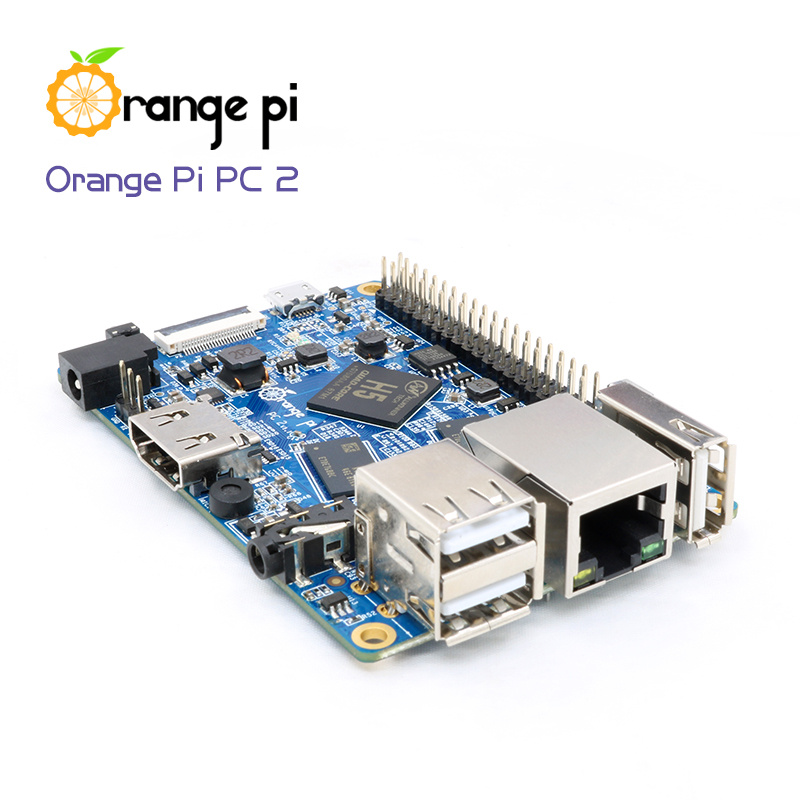
Company / Project - Shenzhen Xunlong Software
LinuxGizmos Review
Product page
CPU - Allwinner H5 (4x Cortex-A53); Mali-450 MP2 GPU
Memory - 1GB DDR3 RAM
Price - $ 20
The first 64-bit motherboard from Shenzhen Xunlong, Orange Pi, appeared last November, has the same size of 85 x 55mm, a 40-pin RPi connector, and many other features of the Orange Pi PC. However, it is based on the quad-core -A53 Allwinner H5 instead of -A7 H3. The PC 2 board is also equipped with three USB host ports, and micro-USB OTG, HDMI, GbE, microSD, CVBS, audio, and MIPI-CSI ports.
Orange Pi Plus2 / Plus2E
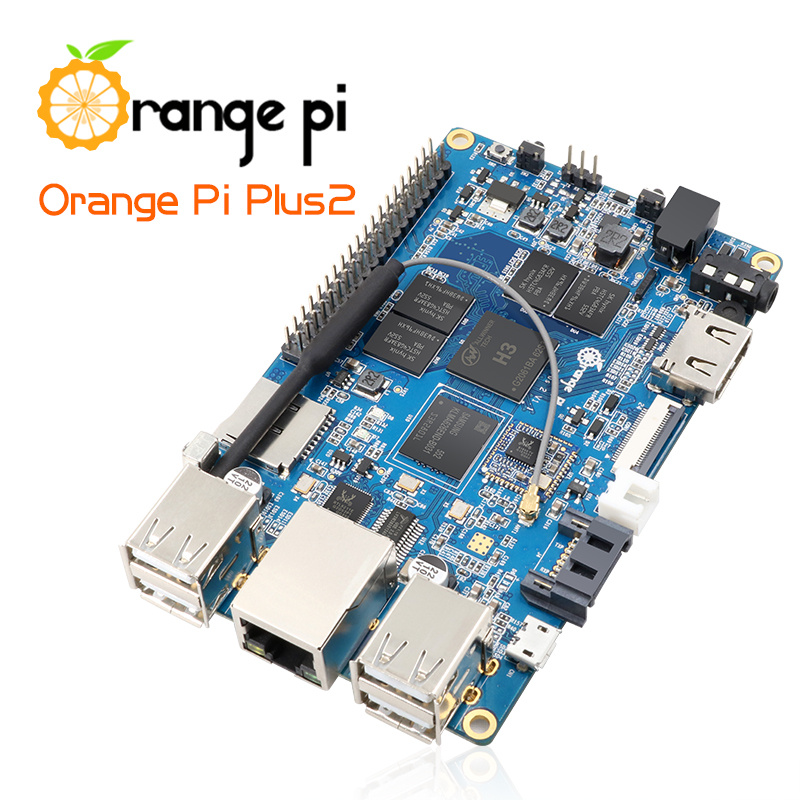
Company / Project - Shenzhen Xunlong Software
Product page
CPU - Allwinner H3 (4x Cortex-A7 @ 1.6GHz); Mali-400 MP2 GPU
Memory - 2GB DDR3 RAM; 8GB eMMC
Price - $ 49 ($ 35 for Plus2E)
Like the Orange Pi 2 and still available, the $ 39 Orange Pi Plus1, Orange Pi Plus2 board and the new Plus2E run on Lubuntu, Raspbian, and Android on a quad-core 1.6GHz Allwinner H3. Compared to Plus1, the Plus2 board has twice the RAM, 2GB, and a larger size (108 x 67mm). Otherwise, they are identical, including RPi-compatible 40-pin connector, four USB host ports, a GbE port, and WiFi. The board is also equipped with micro-USB, microSD, SATA, HDMI, CVBS, and CSI connectors. In the Orange Pi Plus2E, the four-port USB hub is replaced with three separate USB ports, and there is no SATA connector, but it is $ 14 cheaper.
Orange pi prime
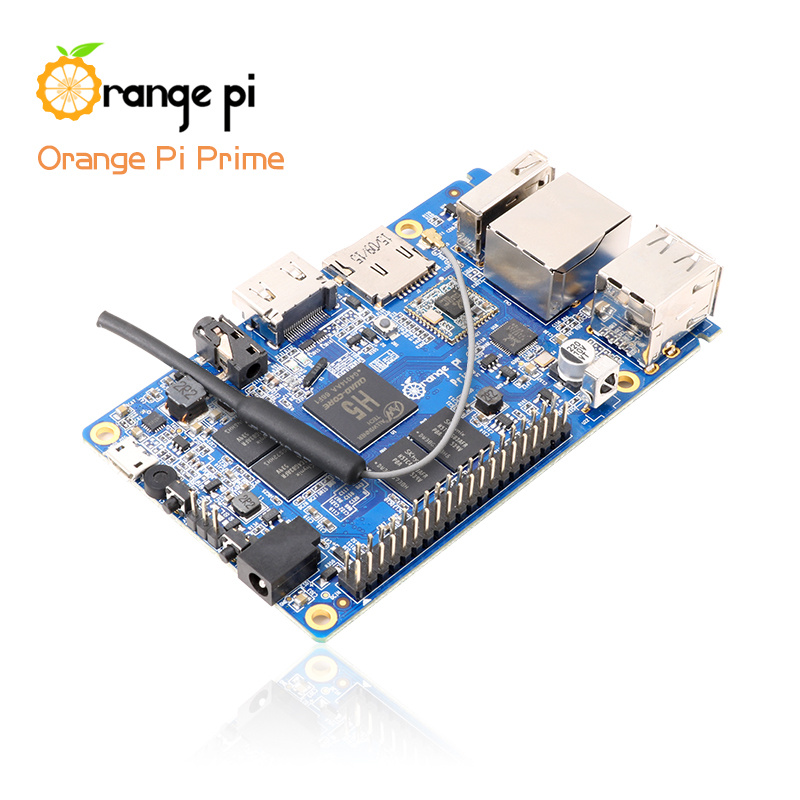
Company / Project - Shenzhen Xunlong Software
LinuxGizmos Review
Product page
CPU - Allwinner H5 (4x Cortex-A53); Mali-450 MP2 GPU
Memory - 2GB DDR3 RAM
Price - $ 29.90
Like the $ 20 Orange Pi PC 2, the Orange Pi Prime for $ 30 is based on the -A53 Allwinner H5, has a 40-pin RPi connector, three USB host ports, and micro-USB connectors OTG, HDMI, GbE, microSD, CVBS, audio, and MIPI-CSI. It is large, 98 x 60mm, has 2GB RAM, as well as WiFi, Bluetooth, an extended temperature range from -10 to 65 ° C. Images are available for Android 4.4, Debian Desktop, Ubuntu Desktop, Arch Server, Raspberry Pi, and Banana Pi.
Orange Pi Win Plus / Win

Company / Project - Shenzhen Xunlong Software
LinuxGizmos Review
Product page
CPU - Allwinner A64 (4x Cortex-A53); Mali-400 MP2 GPU
Memory - 2GB DDR3 RAM for Win Plus (1GB on Win); optional eMMC
Price - $ 29.90 (Win Plus) or $ 25 (Win)
While the new 64-bit Orange Pi models use the Allwinner H5, the Orange Pi Win Plus with 2GB memory and the Orange Pi Win with 1GB use the old Allwinner A64, almost the same, except for the weaker Mali-400 GPU. Win Boards, named for Windows 10 IoT support, work on Android 6.0, Ubuntu Desktop / Server Xenial, Debian Server Jessie, and Raspberry Pi. The 93 x 60mm board is only slightly smaller than the similar in price and configuration, Orange Pi Prime on the H5. Like Prime, the Win card has micro-USB OTG, HDMI, GbE, microSD, audio, MIPI-CSI, and a 40-pin RPi connector. It is also equipped with WiFi and Bluetooth, and works in the range of -10 to 65 ° C. The difference lies in the MIPI-DSI LCD interface installed on the Win cards instead of RCA / CVBS / AV, and the availability of four USB host ports instead of three. Also you get the optional eMMC.
Orange pi zero
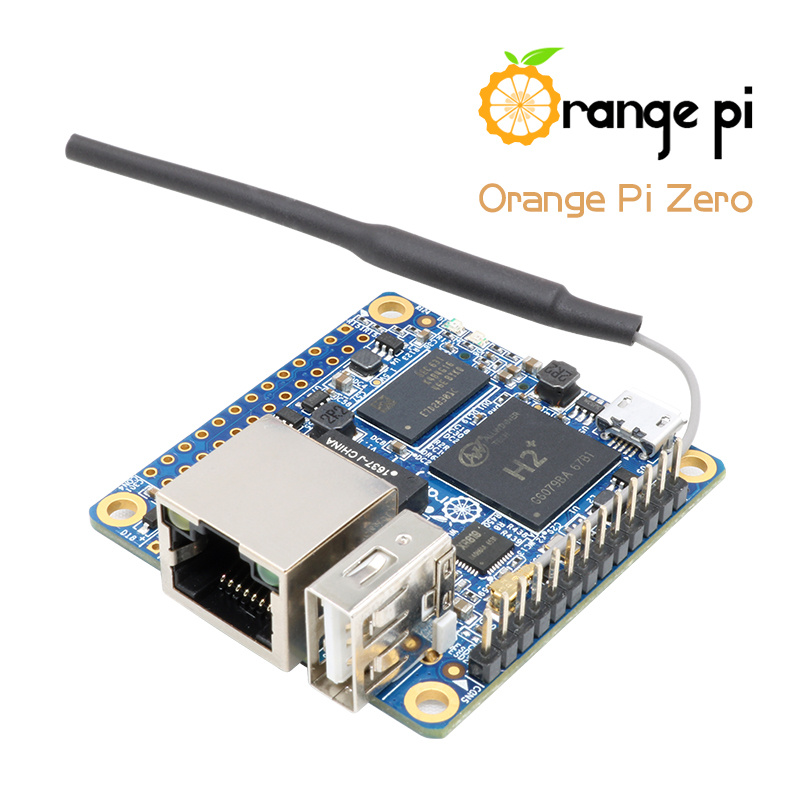
Company / Project - Shenzhen Xunlong Software
LinuxGizmos Review
Product page
CPU - Allwinner H2 (4x Cortex-A7 @ 1.2GHz); Mali-400 MP2 GPU
Memory - 256MB or 512MB DDR3 RAM
Price - $ 7 or $ 9 (512MB)
The Orange Pi Zero is the smallest and cheapest single board in the lineup. A bit smaller than the 48 x 46mm Raspberry Pi Zero, the board uses the Allwinner H2 SoC, similar to H3, but limited to HD instead of 4K. Oriented to IoT Orange Pi Zero has only one USB 2.0 port, and micro-USB OTG for power, and also WiFi and Ethernet. There is a 26-pin connector, compatible with the old Raspberry Pi, and a separate interface with 13-pin, 3x GPIO, serial port, and microphone interface.
Orange Pi Zero Plus 2 H3 / Zero Plus 2 H5

Company / Project - Shenzhen Xunlong Software
LinuxGizmos Review
product page
CPU - Allwinner H3 (4x Cortex-A7 @ 1.2GHz with Mali-400 MP2 GPU) or Allwinner H5 (4x Cortex-A53 @ 1.2GHz with ARM Mali-450 MP2 GPU)
Memory - 512MB DDR3 RAM; 8GB eMMC
Price - $ 18.90 or $ 19.90 (H5)
The new version of Orange Pi Zero has the same tiny, 48 x 46mm, dimensions, but offers a choice between two more powerful processors. The Orange Pi Zero Plus 2 H3 is based on Allwinner H3 instead of H2, with 4K support. The Orange Pi Zero Plus 2 H5 has a more powerful -A53 Allwinner H5, with a Mali-450 GPU. For the rest, the devices on H3 and H5 are identical and differ in price only by $ 1. The difference with the still available Zero is that USB 2.0 host and 10/100 Ethernet ports are removed, as well as the microphone interface. The Zero board is limited to the AV interface, grouped with other I / O in a 13-pin connector, the Zero Plus 2 board has an HDMI port and a MIPI-CSI interface. They also have 8GB eMMC and Bluetooth 4.2, which is provided by the Ampak AP6212 module along with WiFi. It would look good for such an inexpensive board, if only it added support for 1GB of RAM.
All Articles